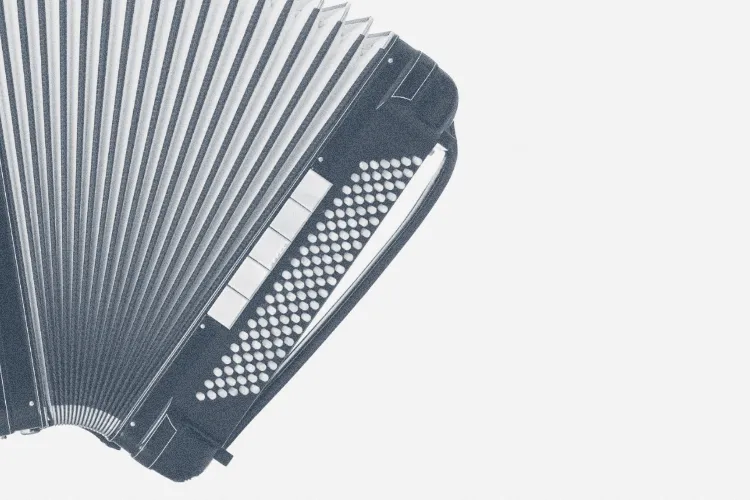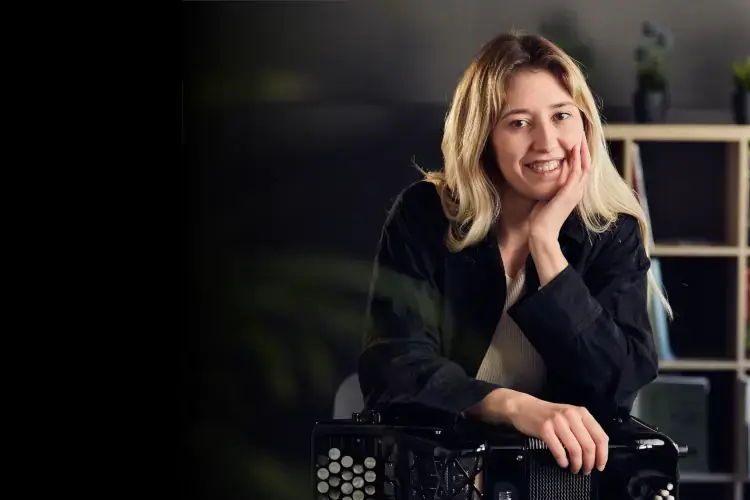by Irene Urrutia Martín (23.08.2023)
Diatonic accordions are an integral part of the traditional music of many countries. Whether it's the alpine "Steirische Harmonika", the Italian diatonic accordion, or the Basque Trikitixa, they all differ in their playable keys and mechanics. Accordionist Irene Urrutia Martín guides us through the various terms.

Basque Trikitixa (© Creative Commons 2.0 | GipuzkoaKultura)
The diatonic accordion is a reed and keyboard instrument used in the traditional music of various countries. Unlike the chromatic accordion, whose keyboard can produce all the chromatic tones of an octave, the diatonic accordion is limited to the tones of a specific diatonic scale, such as C major or F major.
The keyboard of a diatonic accordion is divided into rows of buttons on the right side. Each row of buttons typically represents a different diatonic (also: natural) scale. On the left side are (fewer overall) bass notes.
We use YouTube to embed video content. This Google service has its own cookies and may collect data about your activity. You can find more information in the data protection declaration of the provider. We need your consent to display YouTube videos:
Show YouTube contentThe diatonic accordion has developed in different ways within the various musical traditions of each country, resulting in different instruments depending on the tradition to which it belongs. The most common model is the two-row accordion on the right side with 8 basses on the left side. An example of this would be the Irish diatonic accordion, which appears in Celtic Music, or the Basque Trikitixa, which would differ in its tuning and a unisonoric left hand (more on this in the next section).
In Latin America, the diatonic accordion has three rows on the right side, tuned in fourths. This accordion has twelve basses on the left manual and is used for the rhythms of Latin American music, such as Colombian Vallenato or Cumbia, Mexican Rancheras, or Tex-Mex music.
The chromatic bisonoric accordion has evolved from the diatonic accordion, allowing for playing with all twelve tones. It arose from the desire to add more altered tones in the third row of the right hand for more expressive playing. On the left hand, it goes from 8 to 18 and finally to 24 basses, arranged in up to four rows.
We use YouTube to embed video content. This Google service has its own cookies and may collect data about your activity. You can find more information in the data protection declaration of the provider. We need your consent to display YouTube videos:
Show YouTube contentTo understand the principle of the accordion as an instrument and grasp the differences between the various types of accordions, we need to understand some basic concepts. The accordion is an instrument with free metal reeds, meaning its sound is produced by metal reeds vibrating under the pressure of air. When opening and closing the bellows, the channels through which the air flows open differently, so that one metal reed sounds when the bellows are pulled apart and another when they are pushed together.
For this reason, accordions are divided into "unisonoric" and "bisonoric". Unisonoric accordions are those in which both reeds are tuned the same, so that the same note sounds when the bellows are opened and closed. Bisonoric accordions, on the other hand, are those in which the reeds are tuned to different notes, so that different notes sound when the same button is pressed while opening and closing the bellows.

Discover tips and recommendations for learning, practising and developing your accordion playing. Here you will find a large selection of the most popular instruction books, expert articles and, of course, recommendations from our wide range of sheet music and instruction books for chromatic, keyboard or button accordion or diatonic accordion.
read more
“The accordion is a very physical instrument, so a good awareness of your body gives you a clear advantage. You have to play with your whole body and "breathe" with the instrument.” Accordion player Nadine Soppa anwsers our musical questionaire in order to make deciding which instrument you would like to play a bit easier.
read more